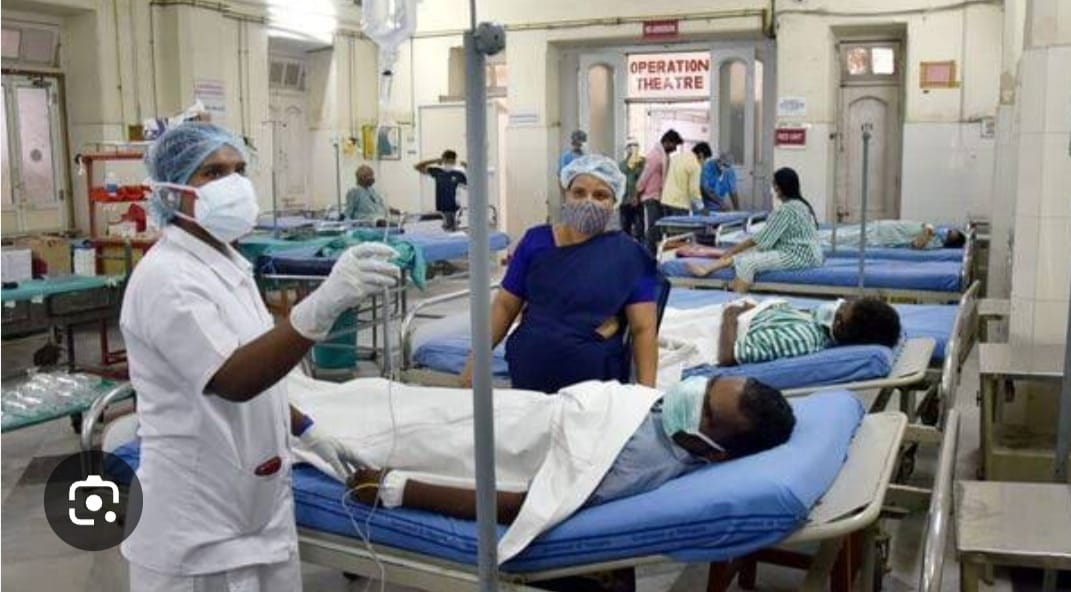Tariq khan cni
Poonch, CNI: In a first-of-its-kind initiative for a conflict zone, the government has proposed the construction of an underground emergency and critical care facility in Poonch district, following the deadly shelling during Operation Sindoor, which left 16 civilians dead and scores injured. The facility is aimed at safeguarding lives and ensuring uninterrupted emergency services during cross-border hostilities.
According to a proposal submitted by the Jammu and Kashmir government, the new unit at District Hospital Poonch will include an underground emergency ward, a fully-equipped operation theatre, a critical care wing, and on-site staff accommodations. If approved, this would be the first underground civilian medical facility in J&K designed to operate amid wartime or shelling scenarios.
Dr. Shafeeq, the Medical Superintendent at the hospital, told Hindustan Times that during the intense shelling in May, the hospital handled the majority of casualties locally despite having limited advanced equipment. “We lacked crucial machines like ventilators. One of the injured, Amarjit Singh, died two hours after arrival due to this shortfall,” he revealed.
While the hospital’s upgrade signals a positive shift in preparedness, a Right to Information (RTI) response has revealed a troubling gap in civil defence infrastructure. As per the J&K Home Department’s reply to RTI activist Raman Sharma, nearly 47% of the Rs 242.77 crore sanctioned by the Centre between 2020 and 2025 for construction of bunkers remains unspent.
Of the allocated funds meant for individual and community bunkers along the Line of Control (LoC) and International Border (IB), only Rs 129.67 crore has been utilized so far. The unused amount of Rs 113.10 crore raises concerns, especially as last month’s shelling—the worst in years—exposed critical gaps in civilian protection infrastructure.
District-wise, Rajouri led in bunker fund usage with Rs 78.05 crore, followed by Poonch (Rs 44.56 crore), Samba (Rs 42.09 crore), Kathua (Rs 37.20 crore), and Jammu (Rs 17.51 crore). In contrast, Kupwara (Rs 14.85 crore), Bandipora (Rs 4.33 crore), and Baramulla (Rs 4.15 crore) significantly lagged, highlighting uneven execution across regions.
Despite these disparities, officials confirmed the construction of around 9,500 bunkers, which played a key role in reducing casualties during the four-day shelling in May that claimed 27 lives and injured over 70. The escalation had followed India’s retaliatory strikes inside Pakistan and PoK on May 6–7, launched in response to the April 22 Pahalgam attack, where 25 tourists and a pony handler were killed.
The Central government had sanctioned 14,460 bunkers in 2018–19 at a cost of Rs 415.73 crore, followed by clearance for 4,000 more bunkers in North Kashmir. However, expenditure trends have dropped sharply in recent years. In 2020–21, Rs 48.81 crore was spent, followed by Rs 33.18 crore in 2021–22, but declined to Rs 22.75 crore in 2022–23, Rs 8.46 crore in 2023–24, and just Rs 16.46 crore so far this year.
Officials attribute the slowdown to procedural delays and land acquisition issues. However, defence analysts and civil society groups argue that the government’s failure to utilize available resources, even in relatively peaceful years, reflects a lack of urgency that could cost lives in future hostilities. (CNI)
